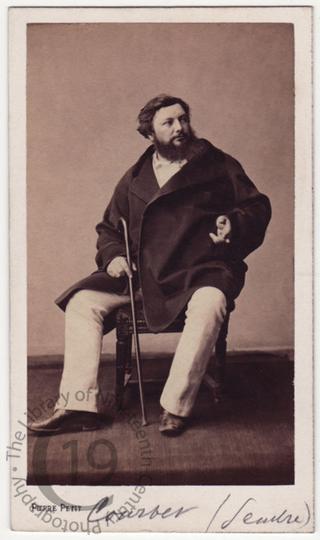
Gustave Courbet
The French painter Gustave Courbet (1819-1877) led the Realist movement in 19th-century French painting. He painted figurative compositions, landscapes, seascapes, and still-lifes. He courted controversy by addressing social issues in his work, and by painting subjects that were considered vulgar: the rural bourgeoisie and peasantry, and the working conditions of the poor. His work belonged neither to the predominant Romantic nor Neoclassical schools. History painting, which the Paris Salon esteemed as a painter's highest calling, did not interest Courbet. Instead, he believed that the only possible source for a living art is the artist's own experience.
Due to his involvement in the Paris Commune, specifically the destruction of the Vendôme Column, he was sentenced to six months in prison. In 1873 he was singled out and ordered to pay the costs of re-erecting the column. Facing bankruptcy, he went into self-imposed exile in Switzerland. In 1877 it was agreed that he could pay his fine in yearly installments of 10,000 francs for the next 33 years, by which time he would have been 91. He died in Switzerland, aged 58, on 31 December 1877, the day before the first instalment was due. The cause of death was liver disease aggravated by heavy drinking.
Photographed by Pierre Petit of Paris.
Code: 124112




